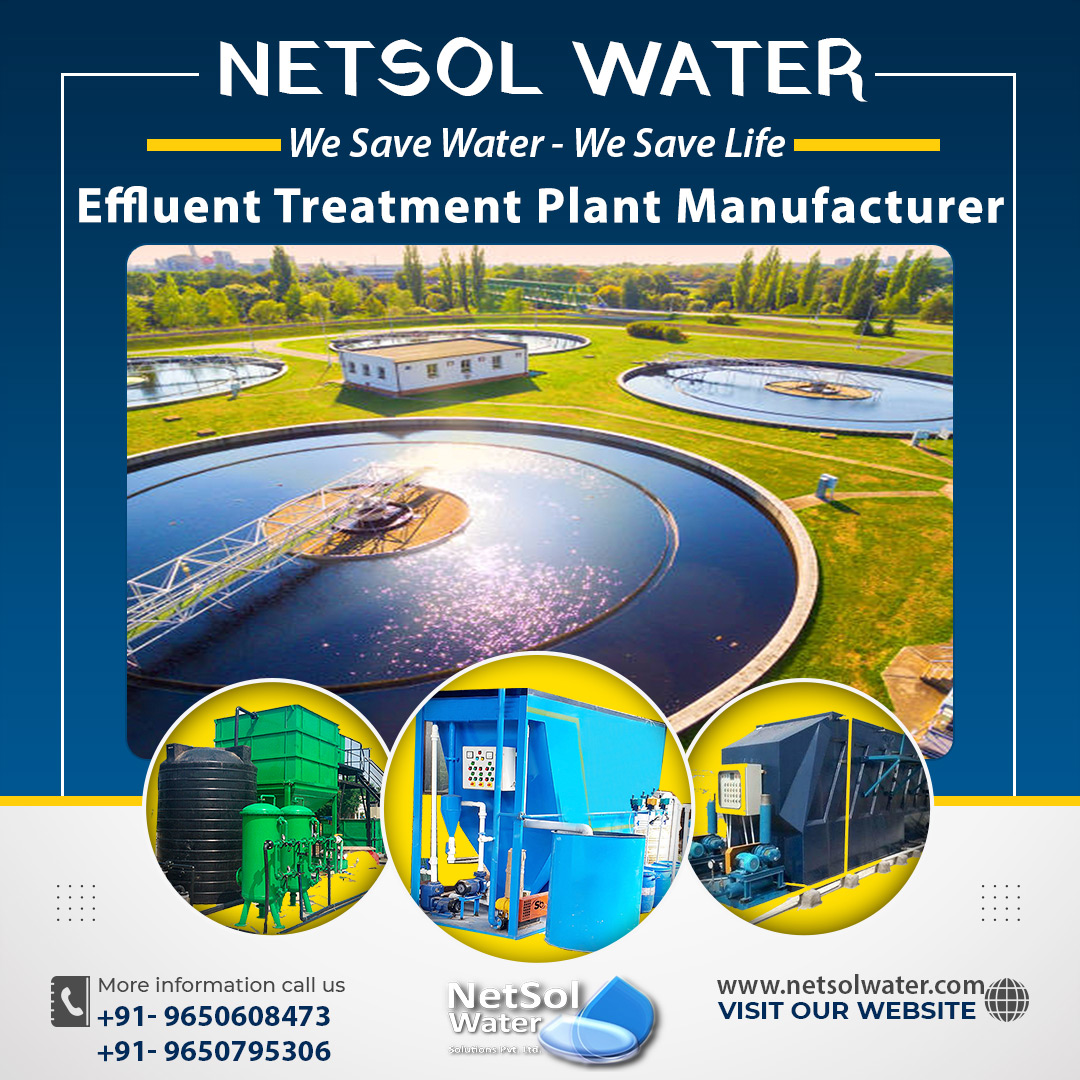Which factors affect the design of ETP?
Effluent treatment facilities or ETPs treat industrial effluents, to remove dangerous microorganisms, toxic chemicals, detergents, and poisons from the wastewater, as well as separate and extract useful compounds.
The recommended treatment chemicals are employed in our country's various effluent treatment facilities, to efficiently treat water. The quality of one's treatment plant's effluent is crucial. The properties of the effluent define the essential factors that are related to it. The biological, chemical, and physical factors that determine effluent quality must be considered, while constructing the treatment facility.
But, there are some factors which affect the design of effluent treatment plants.
Factors influencing effluent treatment plants
· Effluent inflow estimation
Manufacturers like Netsol Water Solutions, include the effluent inflow, which can be accounted for, in the near future.
· Seasonal changes in inflow size
We must all account for seasonal variations in inflow size. Furthermore, during the day, inflows may be bigger than at night. The influx is expected to be stronger during the rainy season.This intake must be stabilized or made virtually constant, in order for the downstream treatment process to work.
· Size of the effluent treatment plant
The size of the effluent treatment plant must be determined. To get the hydraulic calculations right, you must compute the projected effluent input into the plant, as well as the size of the conveying pipes and effluent channels.
· Physical qualities of effluent
Consider the physical properties of the effluent while planning the plant. This covers the colour, component solids, temperature, and even odour of the effluent. This also means that the presence of suspended particulates, indicates poor effluent quality, complicating treatment.
· Use of equalization tanks and ponds
These tanks and ponds offer additional advantages. In many circumstances, toxic compounds in wastewater, might have a detrimental influence on effluent operations.Harmful wastewater can therefore be decreased, by diluting it in equalization ponds with less toxic effluent.
· Capability to handle shock loads
Keep it in mind while developing the plant. It must be able to sustain shock loads during vacation seasons. The effluent load might also rise, during particular festivities.
· Other effects
These include effluent turbidity, the quantity of sediment present, and the effluent temperature. Unfavourable temperatures can also influence important biological and chemical processes.
Advantages of an Effluent Treatment Plant
Waste and discharge restrictions apply to all manufacturing enterprises. Non-compliance may result in a fine and, interference in activities by the pollution control board.
Effluent Treatment Plants manufactured by Netsol Water, can help with:
· Maintain compliance,
· Abolish municipal fines,
· Lower supply costs by recovering production materials from the waste stream, and recycling them,
· Reduce the amount of water used during processing,
· Lower the cost of transportation and off-site treatment.
Conclusion
To summarize, inorganic compounds, heavy metals, hazardous metals, and so on, need specialized treatment techniques. Water shortage is another crucial element to consider. If there is a chance of polluting groundwater, or a nearby flowing stream or river, the user should think about improved effluent treatment plant design procedures.
One of the leading manufacturers in India should be considered for every Effluent Treatment Plant design and implementation. Netsol Water is only a phone call away!For the design, installation and manufacture of Effluent Treatment Plants in India, contact us.




